The Graph Explorer
Welcome to the Graph Explorer, or as we like to call it, your decentralized portal into the world of subgraphs and network data. 👩🏽🚀 The Graph Explorer consists of multiple parts where you can interact with other subgraph developers, dapp developers, Curators, Indexers, and Delegators. For a general overview of the Graph Explorer, check out the video below (or keep reading below):
Subgraphs
First things first, if you just finished deploying and publishing your subgraph in the Subgraph Studio, the Subgraphs tab on the top of the navigation bar is the place to view your own finished subgraphs (and the subgraphs of others) on the decentralized network. Here, you’ll be able to find the exact subgraph you’re looking for based on the date created, signal amount, or name.

When you click into a subgraph, you’ll be able to test queries in the playground and be able to leverage network details to make informed decisions. You’ll also be able to signal GRT on your own subgraph or the subgraphs of others to make indexers aware of its importance and quality. This is critical because signaling on a subgraph incentivizes it to be indexed, which means that it’ll surface on the network to eventually serve queries.

On each subgraph’s dedicated page, several details are surfaced. These include:
Signal/Un-signal on subgraphs
View more details such as charts, current deployment ID, and other metadata
Switch versions to explore past iterations of the subgraph
Query subgraphs via GraphQL
Test subgraphs in the playground
View the Indexers that are indexing on a certain subgraph
Subgraph stats (allocations, Curators, etc)
View the entity who published the subgraph
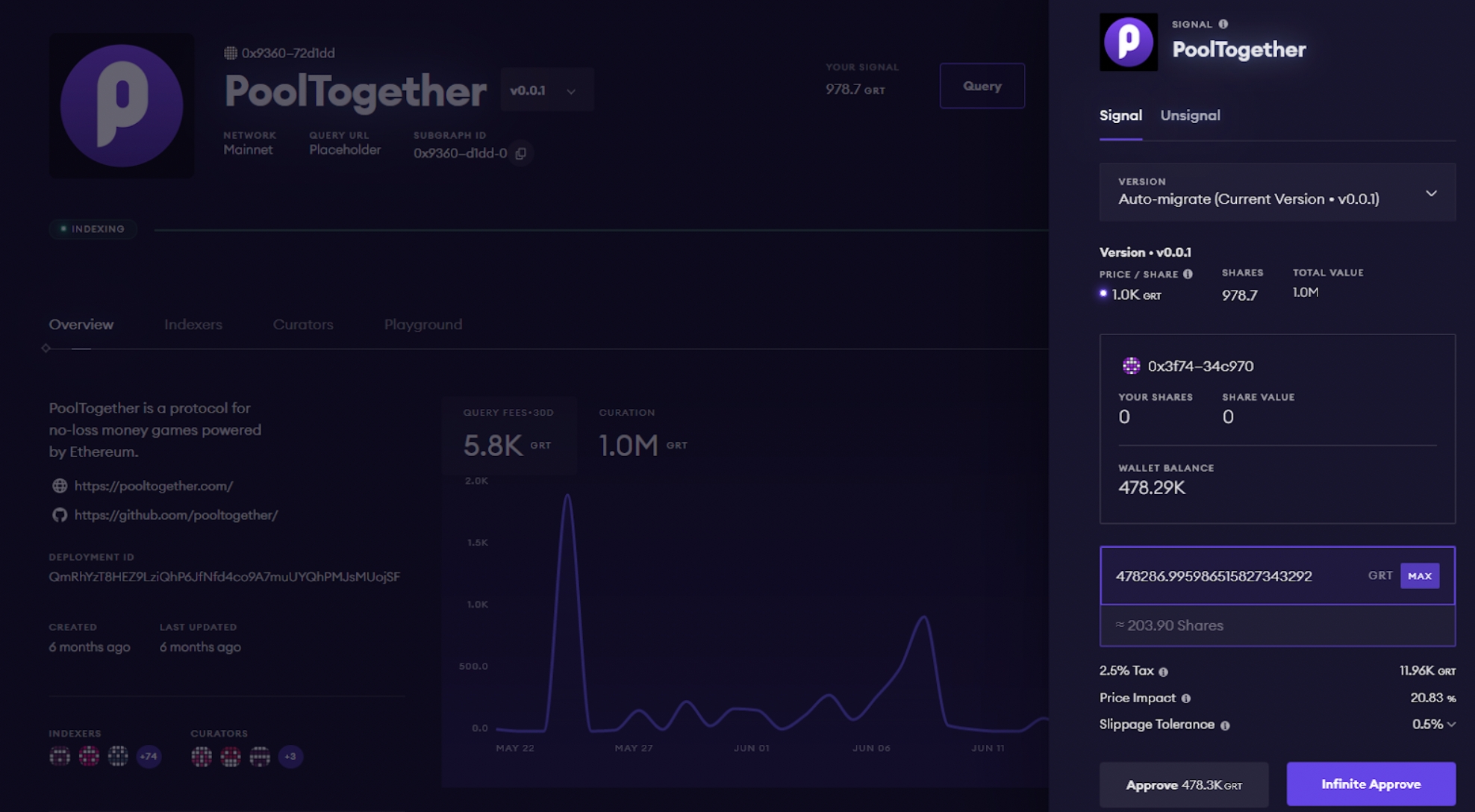
Participants
Within this tab, you’ll get a bird’s eye view of all the people that are participating in the network activities, such as Indexers, Delegators, and Curators. Below, we’ll go into an in-depth review of what each tab means for you.
1. Indexers
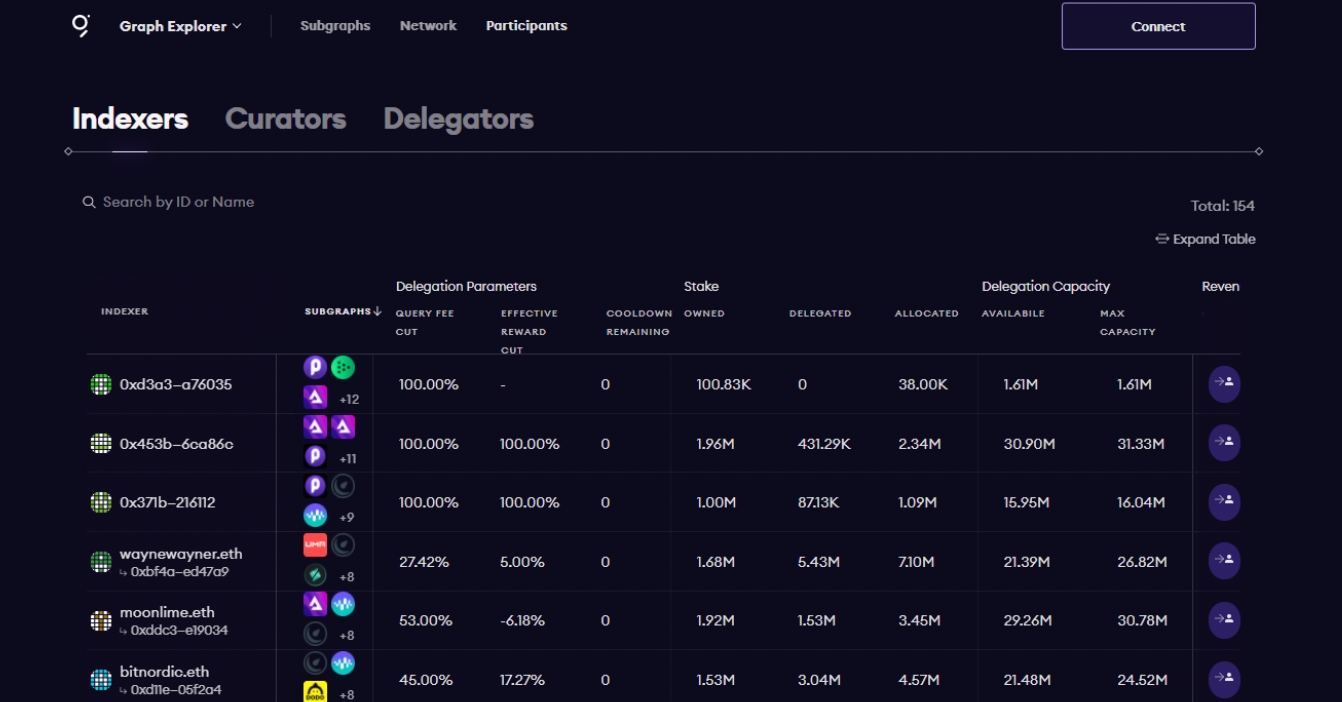
Let’s start with the Indexers. Indexers are the backbone of the protocol, being the ones that stake on subgraphs, index them, and serve queries to anyone consuming subgraphs. In the Indexers table, you’ll be able to see an Indexers’ delegation parameters, their stake, how much they have staked to each subgraph, and how much revenue they have made off of query fees and indexing rewards. Deep dives below:
Query Fee Cut - the % of the query fee rebates that the Indexer keeps when splitting with Delegators
Effective Reward Cut - the indexing reward cut applied to the delegation pool. If it’s negative, it means that the Indexer is giving away part of their rewards. If it’s positive, it means that the Indexer is keeping some of their rewards
Cooldown Remaining - the time remaining until the Indexer can change the above delegation parameters. Cooldown periods are set up by Indexers when they update their delegation parameters
Owned - This is the Indexer’s deposited stake, which may be slashed for malicious or incorrect behavior
Delegated - Stake from Delegators which can be allocated by the Indexer, but cannot be slashed
Allocated - Stake that Indexers are actively allocating towards the subgraphs they are indexing
Available Delegation Capacity - the amount of delegated stake the Indexers can still receive before they become over-delegated
Max Delegation Capacity - the maximum amount of delegated stake the Indexer can productively accept. An excess delegated stake cannot be used for allocations or rewards calculations.
Query Fees - this is the total fees that end users have paid for queries from an Indexer over all time
Indexer Rewards - this is the total indexer rewards earned by the Indexer and their Delegators over all time. Indexer rewards are paid through GRT issuance.
Indexers can earn both query fees and indexing rewards. Functionally, this happens when network participants delegate GRT to an Indexer. This enables Indexers to receive query fees and rewards depending on their Indexer parameters. Indexing parameters are set by clicking on the right-hand side of the table, or by going into an Indexer’s profile and clicking the “Delegate” button.
To learn more about how to become an Indexer, you can take a look at the official documentation or The Graph Academy Indexer guides.
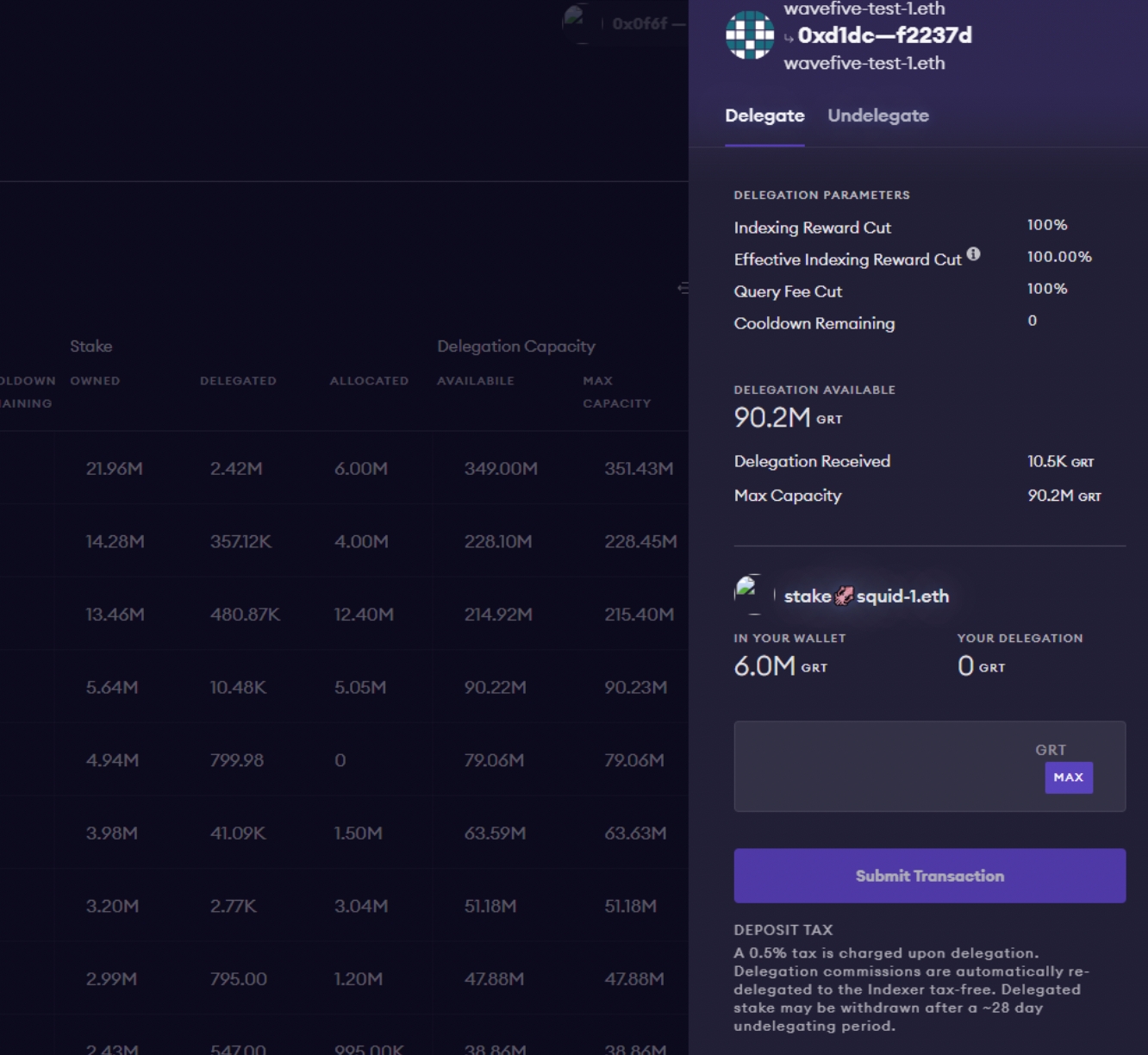
2. Curators
Curators analyze subgraphs to identify which subgraphs are of the highest quality. Once a Curator has found a potentially attractive subgraph, they can curate it by signaling on its bonding curve. In doing so, Curators let Indexers know which subgraphs are high quality and should be indexed.
Curators can be community members, data consumers, or even subgraph developers who signal on their own subgraphs by depositing GRT tokens into a bonding curve. By depositing GRT, Curators mint curation shares of a subgraph. As a result, Curators are eligible to earn a portion of the query fees that the subgraph they have signaled on generates. The bonding curve incentivizes Curators to curate the highest quality data sources. The Curator table in this section will allow you to see:
The date the Curator started curating
The number of GRT that was deposited
The number of shares a Curator owns
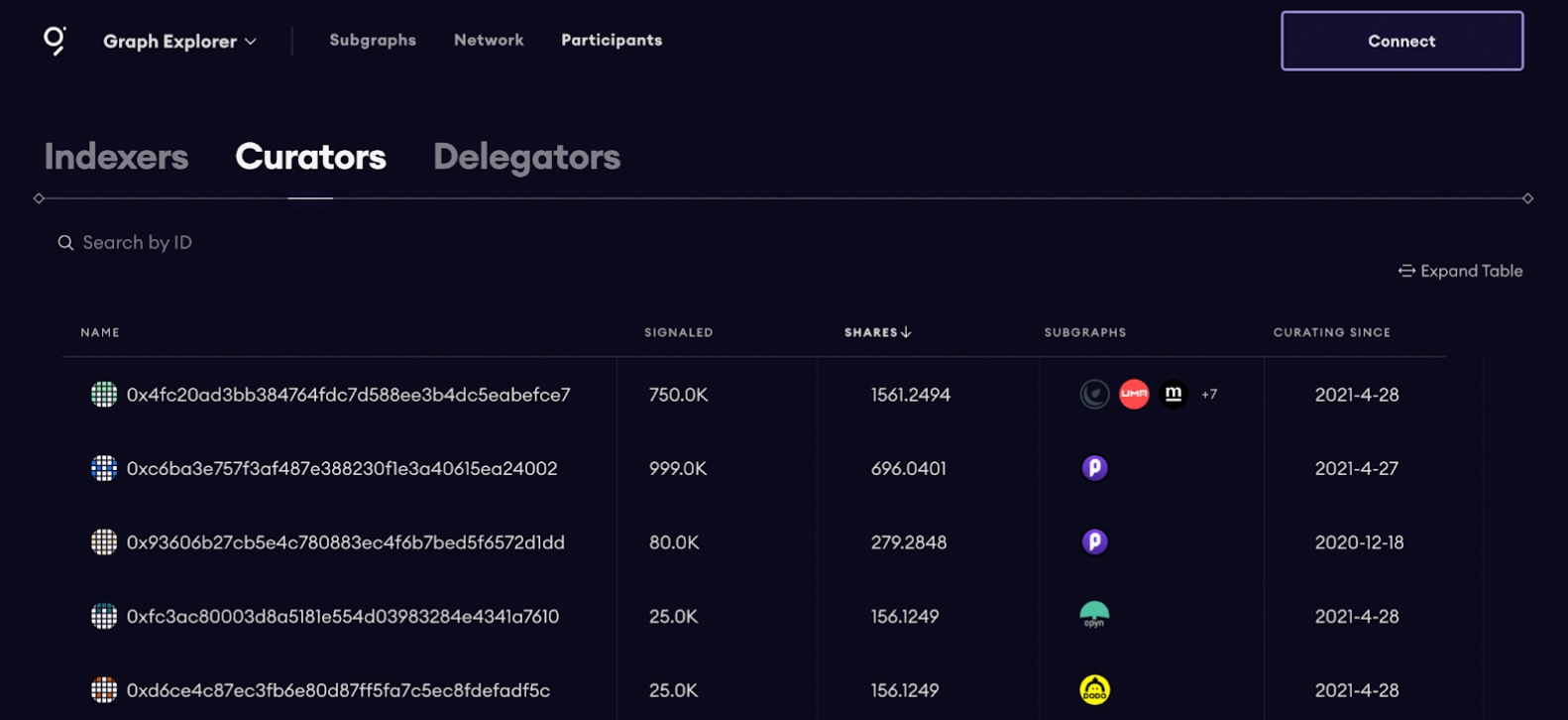
If you want to learn more about the Curator role, you can do so by visiting the following links of The Graph Academy or official documentation.
3. Delegators
Delegators play a key role in maintaining the security and decentralization of The Graph Network. They participate in the network by delegating (i.e., “staking”) GRT tokens to one or multiple indexers. Without Delegators, Indexers are less likely to earn significant rewards and fees. Therefore, Indexers seek to attract Delegators by offering them a portion of the indexing rewards and query fees that they earn.
Delegators, in turn, select Indexers based on a number of different variables, such as past performance, indexing reward rates, and query fee cuts. Reputation within the community can also play a factor in this! It’s recommended to connect with the indexers selected via The Graph’s Discord or The Graph Forum!
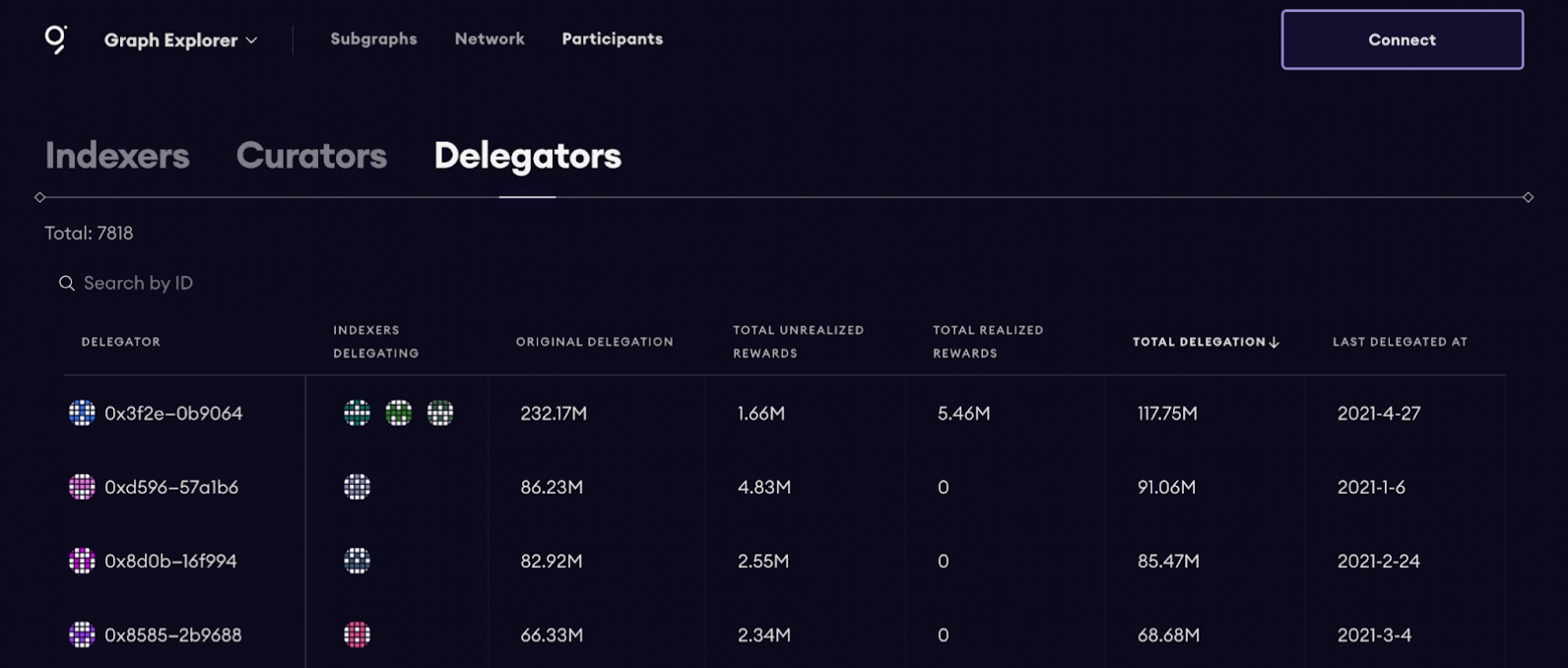
The Delegators table will allow you to see the active Delegators in the community, as well as metrics such as:
The number of Indexers a Delegator is delegating towards
A Delegator’s original delegation
The rewards they have accumulated but have not withdrawn from the protocol
The realized rewards they withdrew from the protocol
Total amount of GRT they have currently in the protocol
The date they last delegated at
If you want to learn more about how to become a Delegator, look no further! All you have to do is to head over to the official documentation or The Graph Academy.
Network
In the Network section, you will see global KPIs as well as the ability to switch to a per-epoch basis and analyze network metrics in more detail. These details will give you a sense of how the network is performing over time.
Activity
The activity section has all the current network metrics as well as some cumulative metrics over time. Here you can see things like:
The current total network stake
The stake split between the Indexers and their Delegators
Total supply, minted, and burned GRT since the network inception
Total Indexing rewards since the inception of the protocol
Protocol parameters such as curation reward, inflation rate, and more
Current epoch rewards and fees
A few key details that are worth mentioning:
Query fees represent the fees generated by the consumers, and they can be claimed (or not) by the Indexers after a period of at least 7 epochs (see below) after their allocations towards the subgraphs have been closed and the data they served has been validated by the consumers.
Indexing rewards represent the amount of rewards the Indexers claimed from the network issuance during the epoch. Although the protocol issuance is fixed, the rewards only get minted once the Indexers close their allocations towards the subgraphs they’ve been indexing. Thus the per-epoch number of rewards varies (ie. during some epochs, Indexers might’ve collectively closed allocations that have been open for many days).
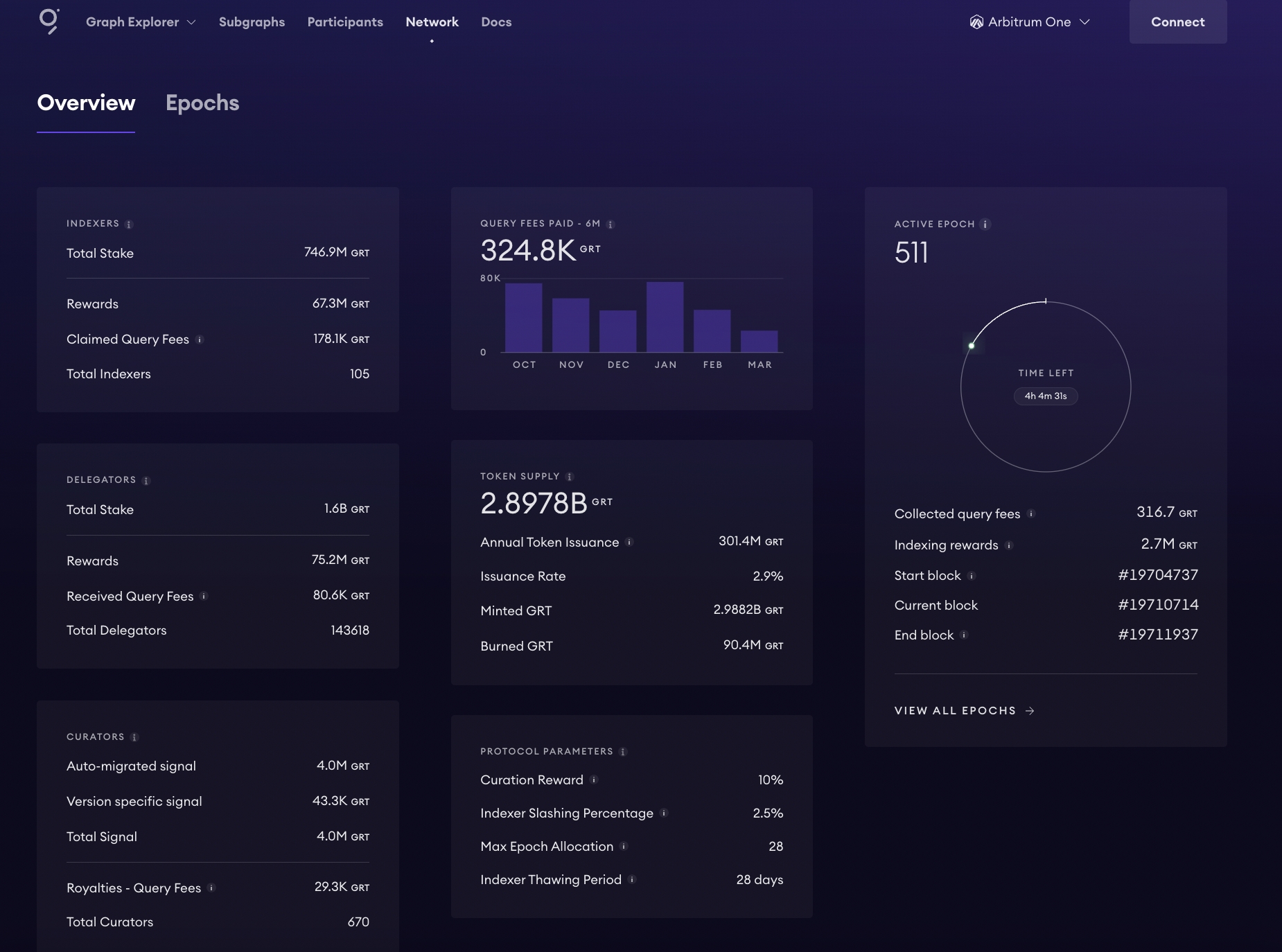
Epochs
In the Epochs section, you can analyze on a per-epoch basis, metrics such as:
Epoch start or end block
Query fees generated and indexing rewards collected during a specific epoch
Epoch status, which refers to the query fee collection and distribution and can have different states:
The active epoch is the one in which Indexers are currently allocating stake and collecting query fees
The settling epochs are the ones in which the state channels are being settled. This means that the Indexers are subject to slashing if the consumers open disputes against them.
The distributing epochs are the epochs in which the state channels for the epochs are being settled and Indexers can claim their query fee rebates.
The finalized epochs are the epochs that have no query fee rebates left to claim by the Indexers, thus being finalized.
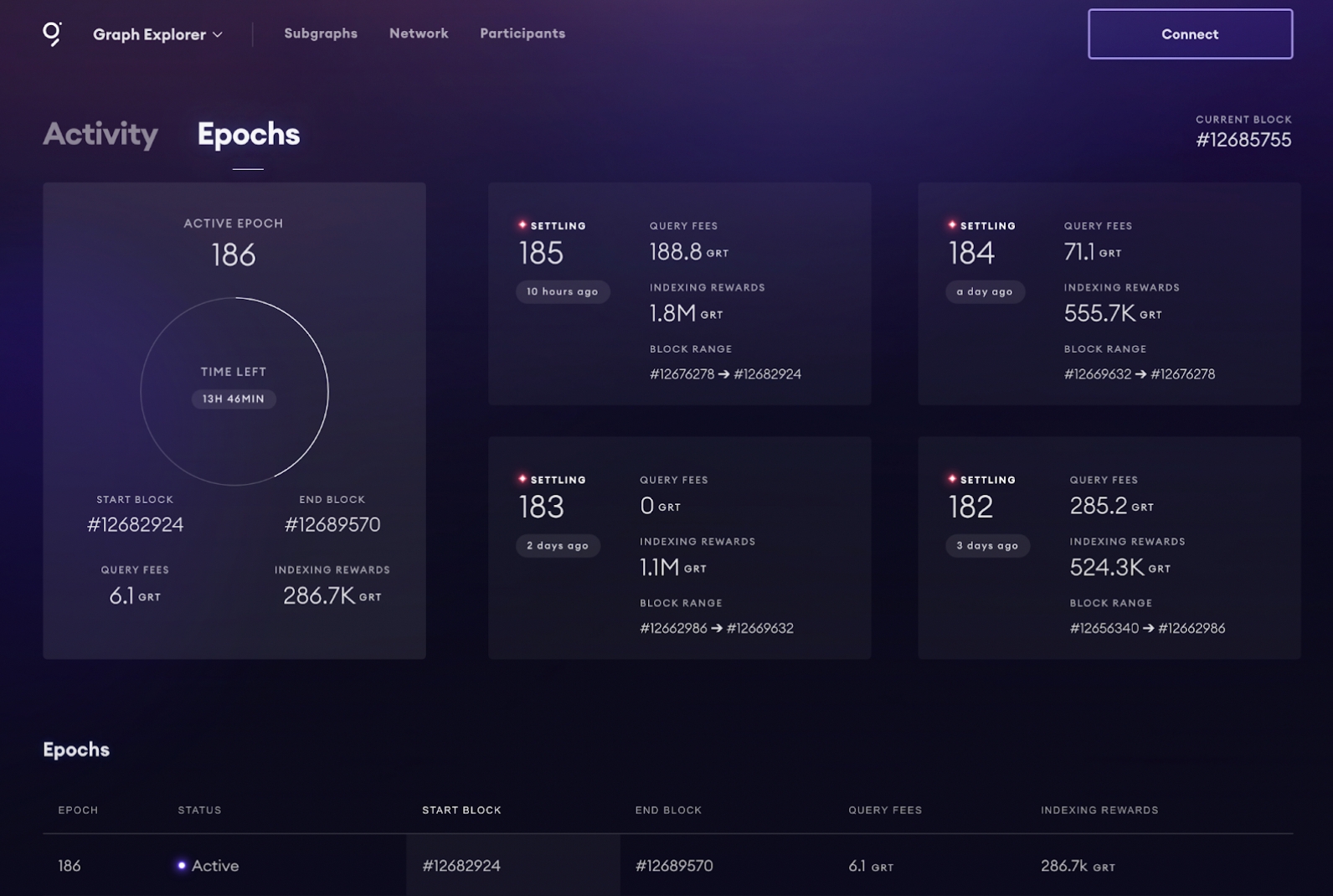
Your User Profile
Now that we’ve talked about the network stats, let’s move on to your personal profile. Your personal profile is the place for you to see your network activity, no matter how you’re participating on the network. Your Ethereum wallet will act as your user profile, and with the User Dashboard, you’ll be able to see:
Profile Overview
This is where you can see any current actions you took. This is also where you can find your profile information, description, and website (if you added one).
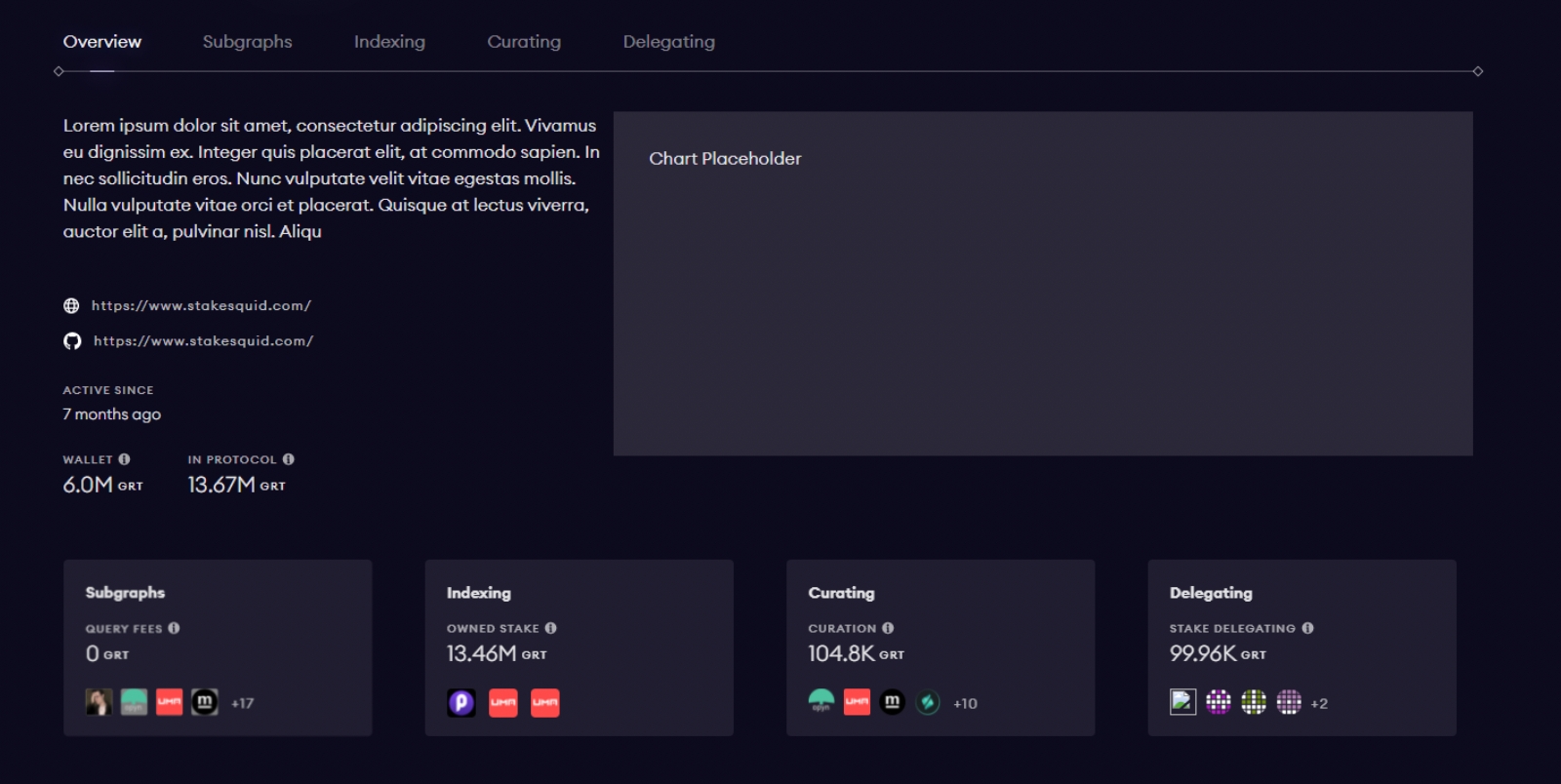
Subgraphs Tab
If you click into the Subgraphs tab, you’ll see your published subgraphs. This will not include any subgraphs deployed with the CLI for testing purposes – subgraphs will only show up when they are published to the decentralized network.
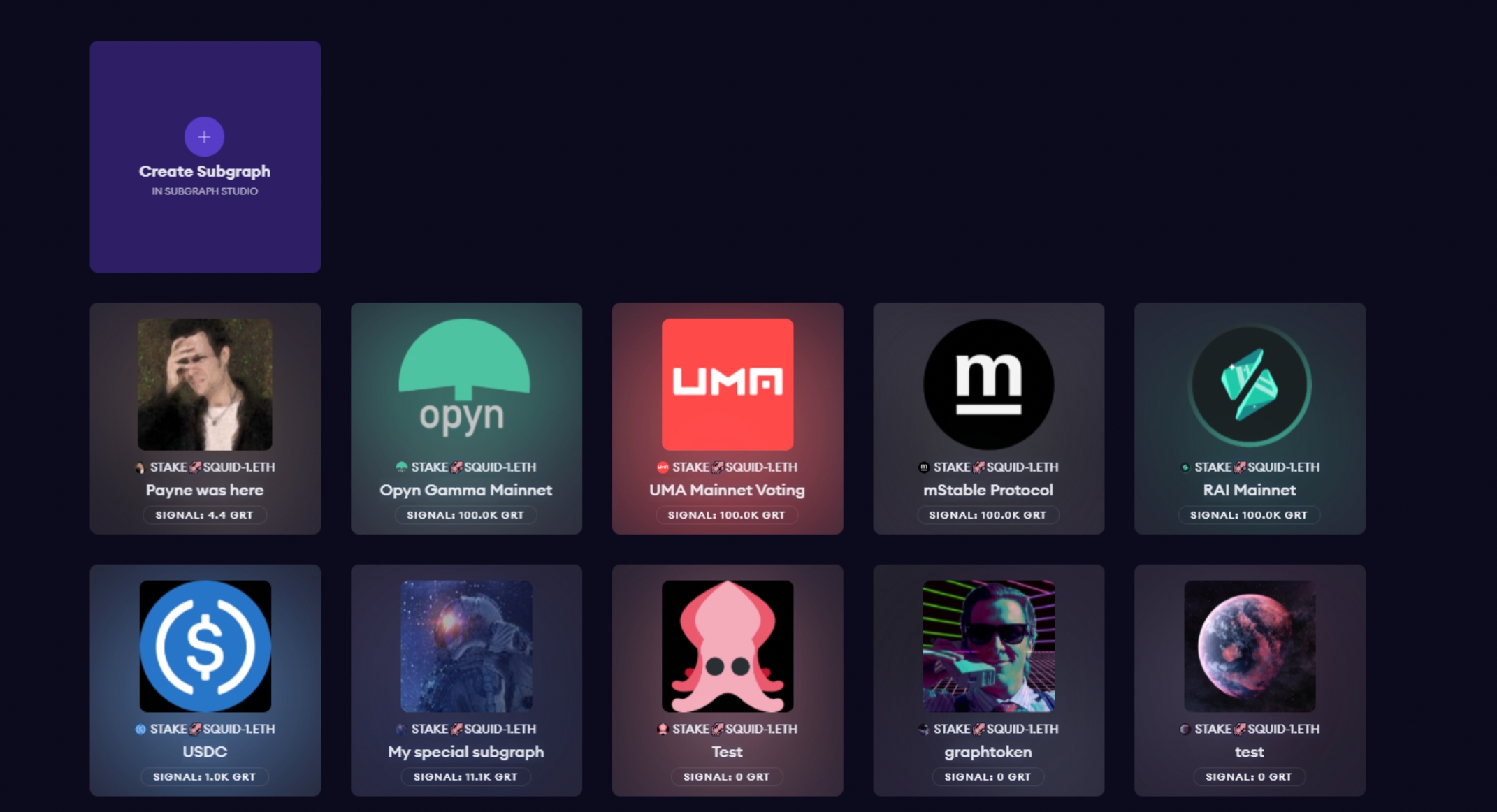
Indexing Tab
If you click into the Indexing tab, you’ll find a table with all the active and historical allocations towards the subgraphs, as well as charts that you can analyze and see your past performance as an Indexer.
This section will also include details about your net Indexer rewards and net query fees. You’ll see the following metrics:
Delegated Stake - the stake from Delegators that can be allocated by you but cannot be slashed
Total Query Fees - the total fees that users have paid for queries served by you over time
Indexer Rewards - the total amount of Indexer rewards you have received, in GRT
Fee Cut - the % of query fee rebates that you will keep when you split with Delegators
Rewards Cut - the % of Indexer rewards that you will keep when splitting with Delegators
Owned - your deposited stake, which could be slashed for malicious or incorrect behavior
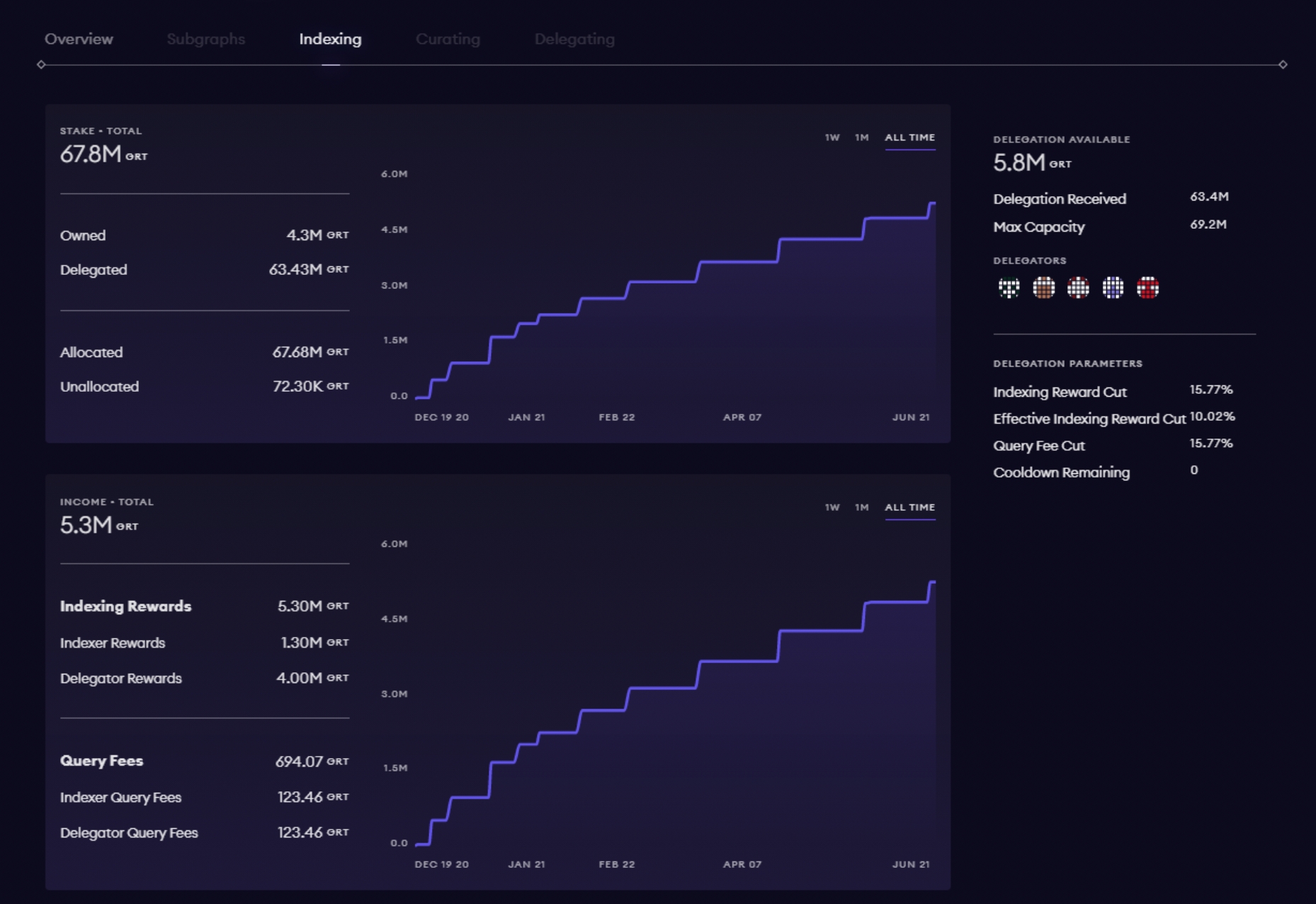
Delegating Tab
Delegators are important to the Graph Network. A Delegator must use their knowledge to choose an Indexer that will provide a healthy return on rewards. Here you can find details of your active and historical delegations, along with the metrics of the Indexers that you delegated towards.
In the first half of the page, you can see your delegation chart, as well as the rewards-only chart. To the left, you can see the KPIs that reflect your current delegation metrics.
The Delegator metrics you’ll see here in this tab include:
Total delegation rewards
Total unrealized rewards
Total realized rewards
In the second half of the page, you have the delegations table. Here you can see the Indexers that you delegated towards, as well as their details (such as rewards cuts, cooldown, etc).
With the buttons on the right side of the table, you can manage your delegation - delegate more, undelegate, or withdraw your delegation after the thawing period.
Keep in mind that this chart is horizontally scrollable, so if you scroll all the way to the right, you can also see the status of your delegation (delegating, undelegating, withdrawable).
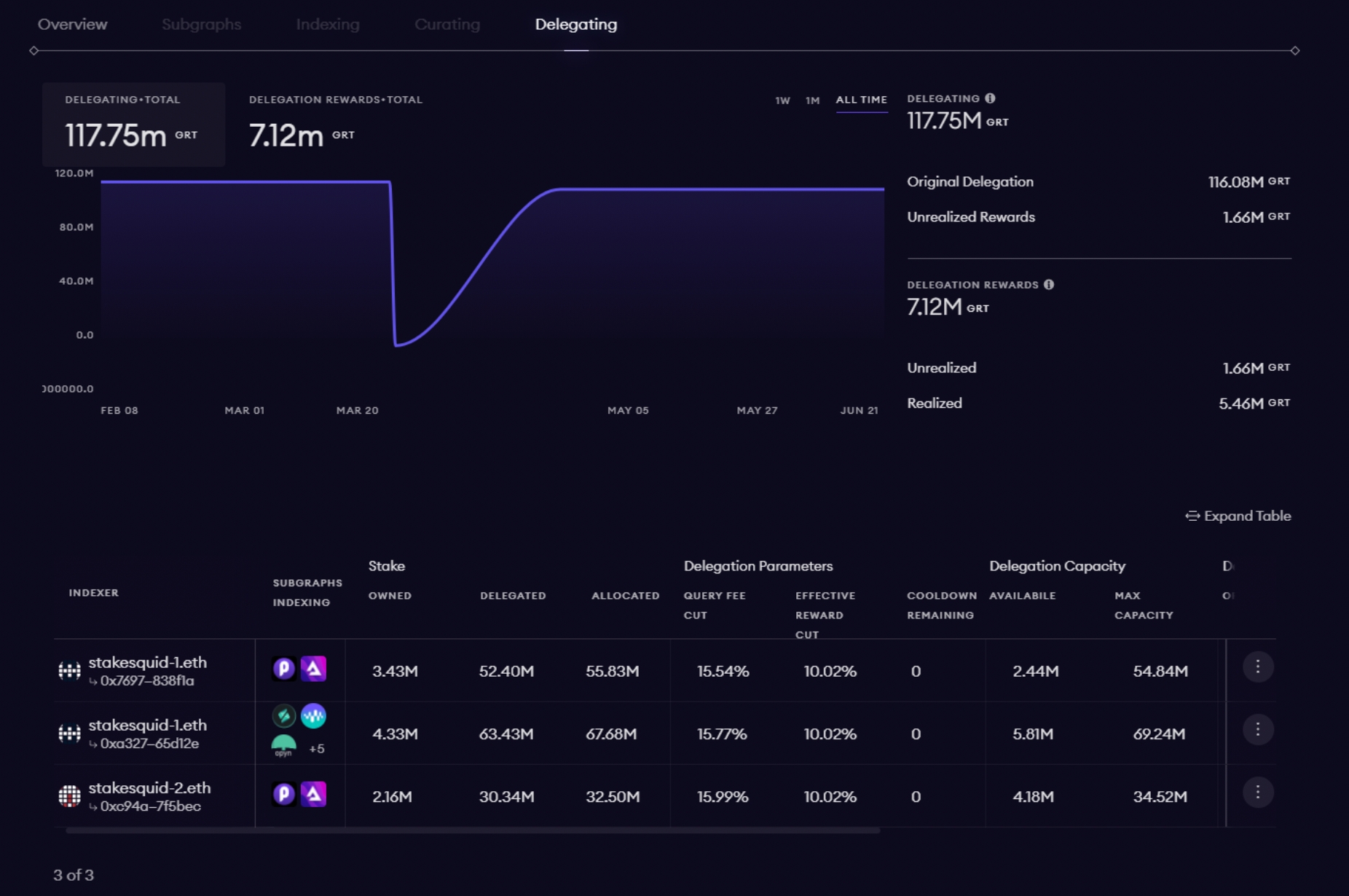
Curating Tab
In the Curation tab, you’ll find all the subgraphs you’re signaling on (thus enabling you to receive query fees). Signaling allows Curators to highlight to Indexers which subgraphs are valuable and trustworthy, thus signaling that they need to be indexed on.
Within this tab, you’ll find an overview of:
All the subgraphs you're curating on with signal details
Share totals per subgraph
Query rewards per subgraph
Updated at date details
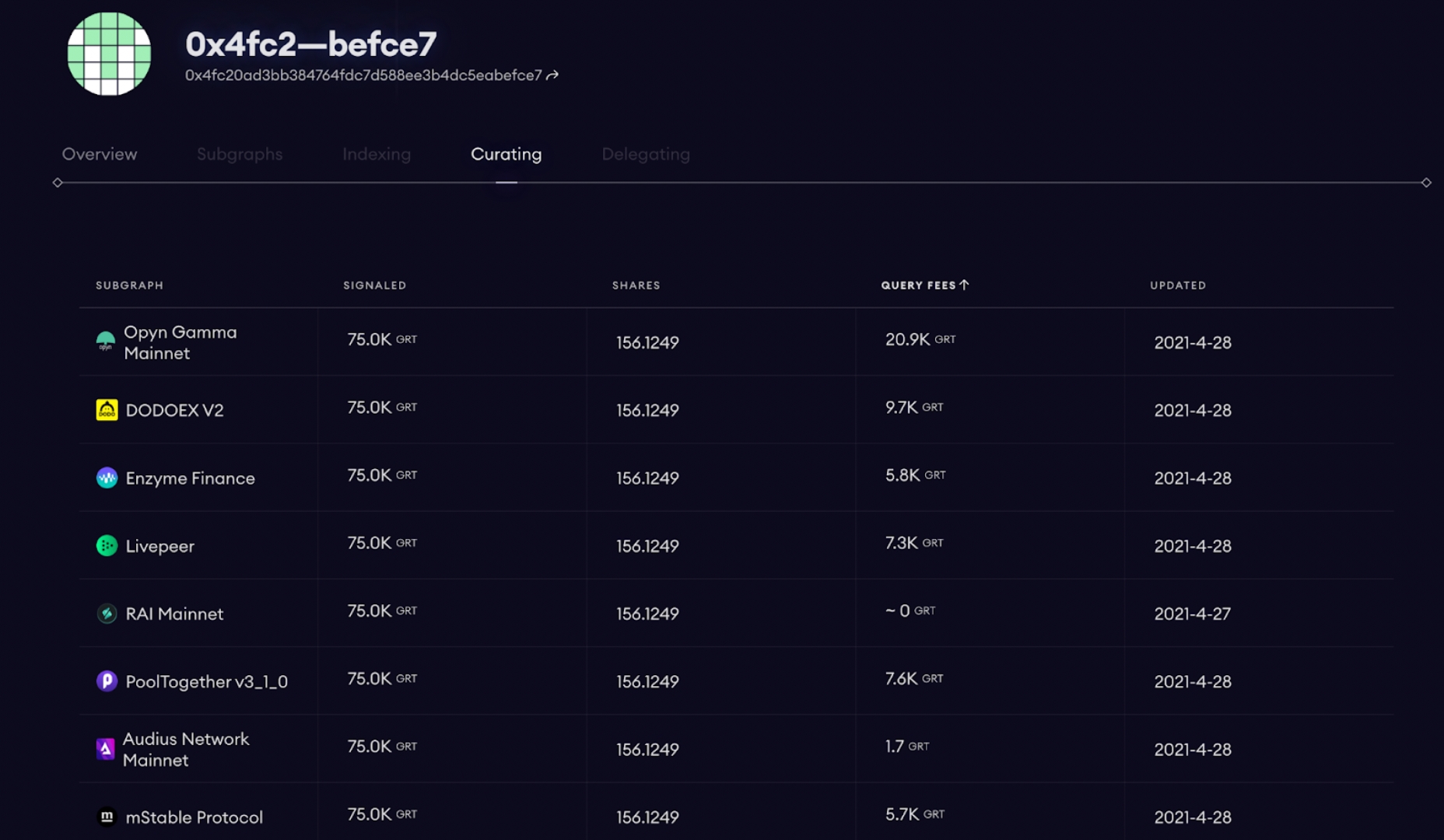
Your Profile Settings
Within your user profile, you’ll be able to manage your personal profile details (like setting up an ENS name). If you’re an Indexer, you have even more access to settings at your fingertips. In your user profile, you’ll be able to set up your delegation parameters and operators.
Operators take limited actions in the protocol on the Indexer's behalf, such as opening and closing allocations. Operators are typically other Ethereum addresses, separate from their staking wallet, with gated access to the network that Indexers can personally set
Delegation parameters allow you to control the distribution of GRT between you and your Delegators.
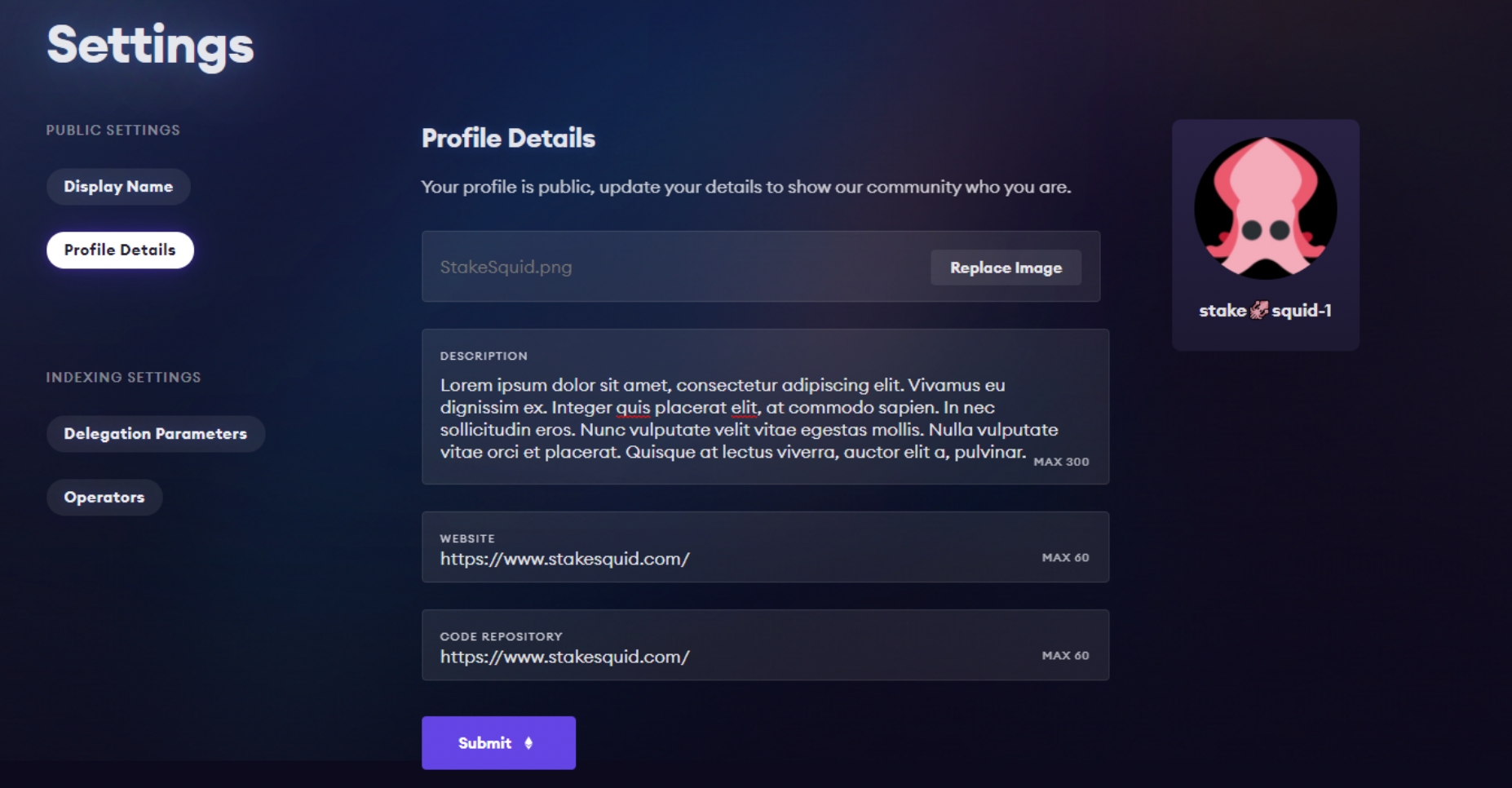
As your official portal into the world of decentralized data, The Graph Explorer allows you to take a variety of actions, no matter your role in the network. You can get to your profile settings by opening the dropdown menu next to your address, then clicking on the Settings button.
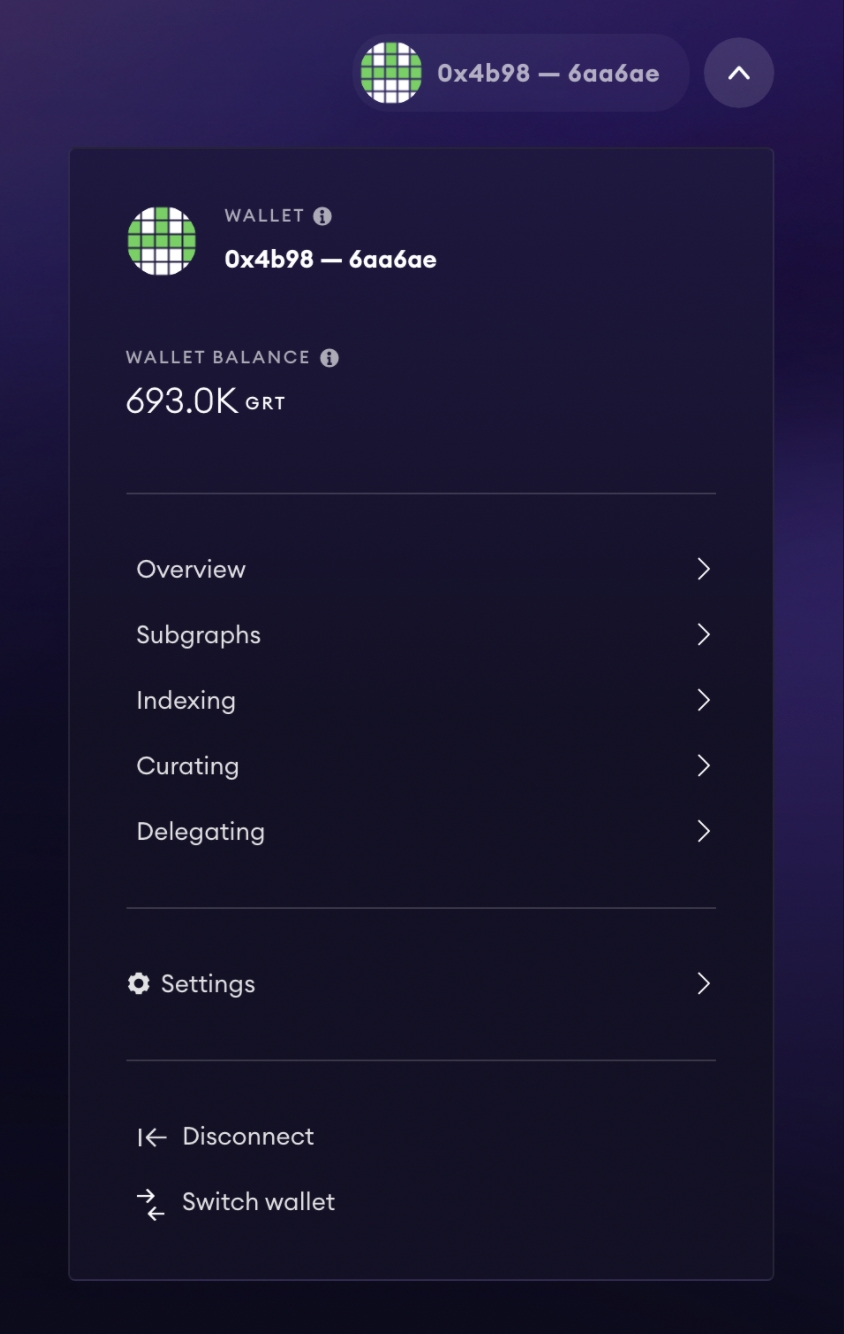
Last updated
Was this helpful?